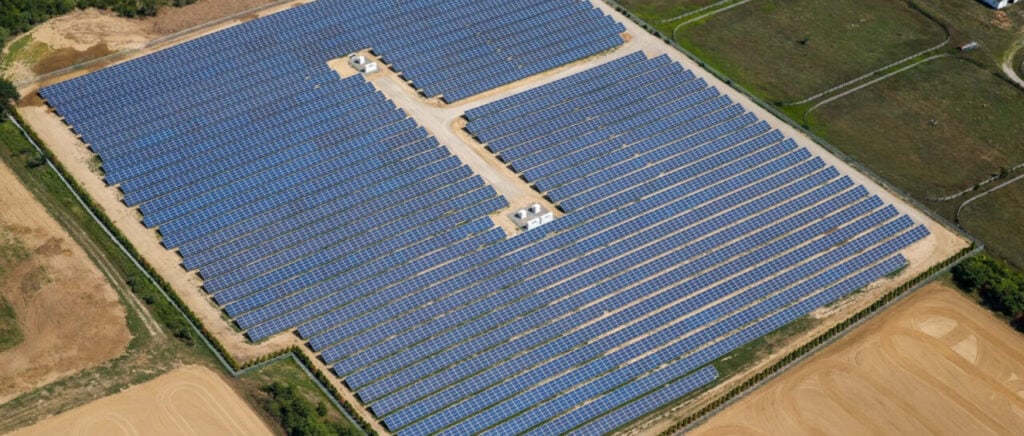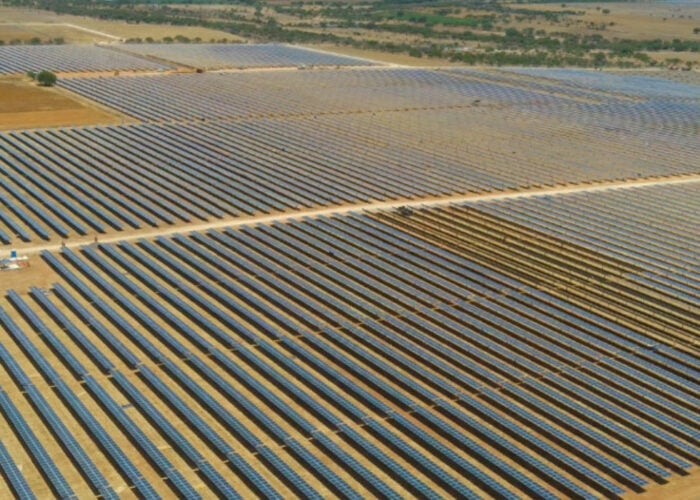
The Trump administration’s move to tighten “start of construction” rules for renewable energy projects in the US will make it more difficult for projects to obtain the Investment Tax Credit (ITC) and Production Tax Credit (PTC), support many developers have been counting on to realise their projects.
The Treasury Department’s new guidance, passed last week and building on the already strict rules imposed by the passage of the One Big, Beautiful Bill Act in July, states that projects must pass a “physical work test” to qualify for tax credits, demonstrating that “physical work of a significant nature” and a “continuous programme of construction” have started and been maintained on a project.
Try Premium for just $1
- Full premium access for the first month at only $1
- Converts to an annual rate after 30 days unless cancelled
- Cancel anytime during the trial period
Premium Benefits
- Expert industry analysis and interviews
- Digital access to PV Tech Power journal
- Exclusive event discounts
Or get the full Premium subscription right away
Or continue reading this article for free
This replaces an old provision, that a developer must spend 5% of a project’s total costs by a certain time, and industry figures have roundly criticised the move as one that will make it more challenging to secure tax credit support. The 5% threshold is still in place for projects under 1.5MW in capacity.
A report from market analyst Clean Energy Associates (CEA) forecast that the US could lose 60GW of planned solar capacity in the next five years due to the challenging financial environment created by the passage of the One Big, Beautiful Bill.
This week, PV Tech Premium heard from leading figures at two US-based developers, Aaron Halimi, founder and president of Renewable Properties and Matt Beasley, chief commercial officer of Silicon Ranch, about the new rules, whether they will affect their operations and what this could mean for the US solar project pipeline in general.
PV Tech: Treasury guidance published last week tightens the “start of construction” rules for solar developers seeking federal incentives. To what extent do the new rules represent a step change from previous guidance on this?
Aaron Halimi: The biggest change in the new rules is the removal of the 5% construction start rule, which effectively meant that if you spend 5% of the project, you’ve deemed the construction has started. That is now removed for projects that are greater than 1.5MW.
From a practical perspective, one of the two “construction start” safe harbour rules will be removed, effective 2 September. The rule remaining is the “continuous physical work” or “continuous construction” rule. There’s been little change, if any change on that rule, specifically.
Matt Beasley: The Treasury’s new framework represents a material shift from the previous guidance. With the phasing out of the existing 5% safe-harbour path for new utility-scale solar projects, the industry will have to prioritise front-end construction to qualify for federal incentives.
Though the guidance may be tighter and expectations for execution may be higher, we have worked diligently over a long period of time to position ourselves to navigate this transition effectively so that we can continue supporting the energy needs of our customers and keep delivering value to the communities where we locate.
How much harder will it be for you to get projects to the threshold, in the time available, than under the previous rules?
AH: It won’t be that much harder. The only material changes are the removal of the 5% equipment spend rule, which is black and white. Whereas the “construction of a significant nature” rule is not as black and white in terms how many hours or how many dollars are required to hit that threshold.
MB: Our industry has always been one with a lower barrier to entry but a higher barrier to execution, given all that is required to carry a project from a development concept to operational infrastructure supplying energy to the grid. The challenge of what we would define as successful execution has not changed, but the stakes certainly have.
To what extent do you now anticipate a period in which you will be rushing to get projects to the minimum level set of what’s been set out in the guidance?

AH: We’ve been rushing to get projects to start construction since the initial draft of the One Big, Beautiful Bill. I believe there will continue to be a rush for people to secure equipment and to start construction on site to the extent that they can.
MB: As you listen to industry participants react to the guidance, it certainly feels as though many are indeed “rushing,” but what happens when you scramble reactively is that mistakes can be made, and the need for electrons in this country is too great and the stakes too high for mistakes to be made.
Despite all the uncertainty and disruption over the past few months, now we have guidance, and the proverbial chessboard is set.
How likely is it that you will have to abandon projects that don’t stand a realistic chance of reaching the start of construction by the deadline?
AH: I do not foresee needing to abandon any of Renewable Properties’ projects in the immediate term. The better question is: “At what point in the cycle will you have to start abandoning projects because you will not be able to come online within four years of starting construction?” That’s an unknown that we won’t experience until closer to that four-year deadline.
MB: Our first imperative as we have considered the new legislative and regulatory framework has been to ensure that we can deliver our contracted capacity, and we are confident in our ability to do so.
As for our uncontracted development pipeline, we have carefully reviewed each project based on a number of market-based and site-specific criteria, including interconnection timelines and permitting schedules and risks, to determine how to prioritise our near-term investments.
While the recent Treasury guidance may impact each project’s economic viability for this sector based on its ability to qualify, the reality is that our country needs more electrons than ever before. This need will only intensify as our economy continues to grow and our country advances toward our critical goal of achieving American dominance in AI.
As other players in the market face the same deadline for reaching start of construction, what pressures will this place on the availability of components and personnel to carry out the necessary works?

AH: Over the next four to five years, in this window where we can start construction and have four years to come online, the people power—the skilled labour—is going to be the ultimate constraint on project deployment. But I don’t foresee that as an issue in the immediate term. Again, I foresee that as an issue in the medium- to long-term. But it absolutely will become the bottleneck.
In terms of components, over the last four months, a lot of the major transformer manufacturers are sold out in terms of their ability to deliver new transformers. Between now and the end of the year, a lot of equipment manufacturers are already sold out. We’re even seeing that from module providers. Renewable Properties is continuing to buy modules up and until 2 September, when the new guidance comes into effect, but there are already fewer modules available today than there were 30, 60, 90 days ago.
MB: Long before it was incentivised by the Inflation Reduction Act (IRA), we were working collaboratively to encourage our strategic US-based supply partners to onshore more of their manufacturing facilities to American soil as part of our long-term master supply agreements.
The IRA certainly helped to catalyse billions of dollars in announced investments to support domestic manufacturing, but that said, the US simply doesn’t have the manufacturing capacity to cover 100% of industry demand overnight, and the uncertainty that arises from policy decisions that pivot from one administration to the next only makes it more challenging for manufacturers to commit to new plants—which ultimately discourages investment in domestic solar manufacturing.
How likely is it that a spike in demand for labour and materials could lead to a surge in pricing or even scarcities of either?
AH: I’d say very likely, but it’s regional-specific. The market dynamics in New York might be different than the dynamics in California and in Illinois and in Texas. The labour markets are very much regional. But the supply chain is very much global. Even so, I foresee that there’s going to be supply chain shortages or constraints on both equipment and labour, but not in the immediate term, but more in the medium to long term.
MB: It is reasonable to assume that availability and cost of labour will become more challenging as the industry competes for resources to build plants in the near term. From a materials perspective, Silicon Ranch is well-positioned thanks to our domestic supply agreements, though many others will find themselves subject to the ensuing volatility.
Overall, how confident are you of being able to get at least some of your project pipeline to the qualifying threshold by the deadline?
AH: I’m confident that I’m going to be able to execute Renewable Properties’ original base case business plan for the next four to five years. Despite this revised guidance, we were already taking steps to safe harbour our pipeline and raise additional capital over the last four to five months while the Big, Beautiful Bill was working its way through the legislative process.
MB: Over the past 14 years, we have installed more than 3.6GW of operating capacity, and in the next three years, that figure will more than double. We are well-positioned to deliver each project.






